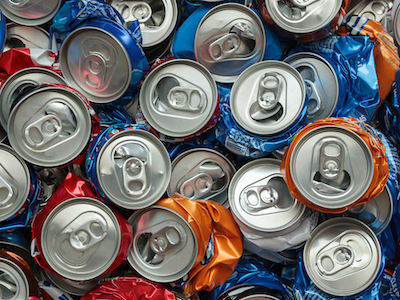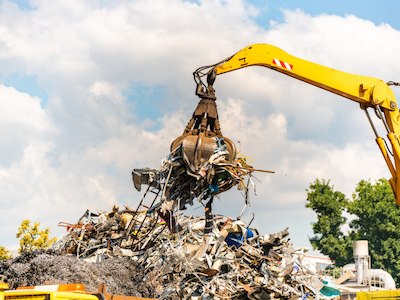Aluminum Scrap Markets

April 30, 2025
Muscle Shoals shuffle: Constellium's scrap strategy
Written by Nicholas Bell
Constellium noted multiple times on the call that the Muscle Shoals, Alabama mill was at an operational high mark.
Deliveries to the packaging segment – by far the largest of any segments, with no other end sector in the same ballpark for the company – increased to 204,000t from 187,000 in Q1 2024, the only uptick of the producer’s consumer markets.
Meanwhile, the company’s overall quarterly shipments declined to 372,000 metric tons (t), from 380,000t in 2024.
The company noted improvements in North American scrap margins, elevated Muscle Shoals operational performance, and possibly focusing more on beverage packaging in light of a tumultuous automotive market.
These comments deserve a closer look.
Scrap tactics and Midwest transaction math
On the same earnings call, a listener noted that the buying spread for used beverage can (UBC) scrap widened to around 70% of the Midwest transaction price (MWTP) recently from 80% of the MWTP around the same time last year to gauge forward-looking scrap outlook from Constellium.
Despite the executive’s comment on the earnings call that Constellium’s purchases is “never reflect the spot price” and that “you will never see a direct impact between the spot price in our scrap results”, they did concede it was a financial tailwind for the company, particularly in regard to Muscle Shoals.
The Midwest premium (MWP) posed the starkest year-over-year input in the MWTP equation, nearly doubled since the prior year period.
The average price of the cash LME settlement in April 2024 – the “same time last year” – was $2,498/t amid an average of 19.8¢l/b for the MWP, compared with an average of $2,384/t in April 2025 with a 38.4¢/lb MWP average.
On a dollar per pound basis, 80% of the April 2024 MWTP of $1.33/lb is $1.065/lb, while this year’s number is about $1.46-1.47/lb multiplied by a 70% buying spread of $1.025/lb.
A 4¢/lb difference – enough to make a big difference but let’s do some further math.
The real metal math
Muscle Shoals annual production capacity is 400,000t/yr and the plant’s stated production capacity devoted to beverage can sheet production is 60%, with the remainder for their automotive offerings. That equates to around 240,000t/yr of devoted beverage can sheet capacity.
Those capacities can change with the market so we’ll make the upper end 78% – 312,000t/yr – or the percentage of first-quarter packaging shipments as a portion of the sum of automotive and packaging rolled products added together.
Assuming a colloquial industry aim of around 2/3rd of a beverage can sheet melt mix being used beverage can scrap, applied to the plant’s beverage sheet capacity results in a range around 160,800-209,040t/yr of UBC consumption capacity or 40,200-52,260t per quarter.
Those numbers, in conjunction with the 4¢/lb year-over-year cost difference would imply a full-consumption quarterly savings of around $3.5-4.5mn.
What’s the catch?
There’s a couple of different caveats. One – these savings are estimated only for the Muscle Shoals mill because of the UBC buying spreads discussed on the call and the company’s reference to favourable North American scrap spreads.
Two – the savings on the “cost-of-metal” for the packaging and automotive rolled product segment was $859mn in the first quarter, for reference.
Three – Inventories undermine a saving on scrap overall…
Inventory insurance
Stockpiling ahead of Section 232 tariffs makes sense and can circumvent future increases in the Midwest premium.
But if there’s a major increase in inventory – there’s a good chance it’s primary metal for all the reasons noted above and because a lot of scrap is purchased on a just-in-time basis (and perishable).
A case could be made that front-loading purchases of metal signals a lack of confidence in future scrap supply, especially if it’s simultaneously occurring during purported margin improvements.
The metal could be for other end markets, like aerospace or automotive, but the earnings call had a downbeat forecast for both those markets.
Realistically, spreads narrow and widen, premiums rise and fall – the absolute dollar per pound price tells the real story. And building inventory in an elevated price atmosphere when there’s a lower-cost alternative being touted raises some questions.







